Palaeontologists from Bulgaria and Macedonia are excavating the fossilised remains of a prehistoric elephant-like creature believed to pre-date the mammoth, after its bones were discovered accidentally by a man working in a field.
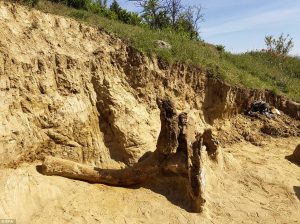
Scientists at the Natural Science Museum of Macedonia and the Natural History Museum of Sofia, Bulgaria said they began excavating the skeleton in Dolni Disan in central Macedonia last month.
They estimated the animal, known as a Mastodon, would have weighed about 10 tons and have been about 50 years old at the time of its death, roughly 8 million years ago during the Miocene epoch.
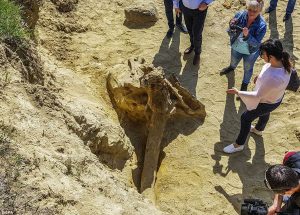
Biljana Garevska of the Natural Science Museum in Skopje said the fossil was of one of the elephant’s ancestors which roamed the region at a time when it was covered by African-like savannah.
The fossils were discovered on April 24 but the Ministry of Culture of Macedonia released new photos today.
The Latin name is ‘Choerolophodon’ and it lived both in Europe and Asia during the Miocene epoch that lasted until around 5 million years ago.
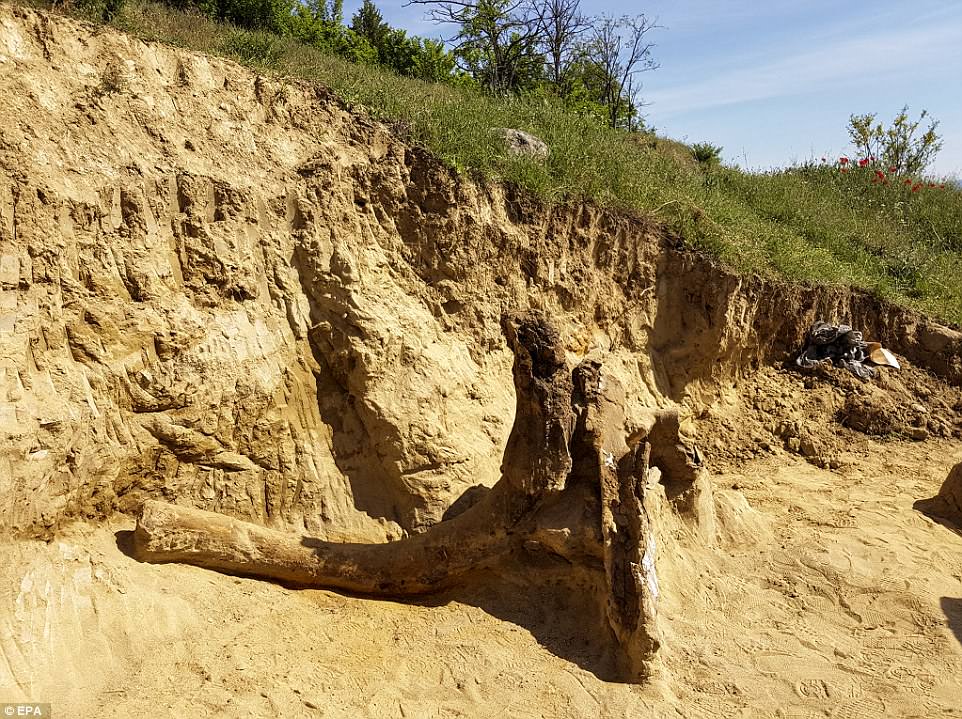
Paleontologists from Bulgaria and Macedonia are excavating the fossilised remains of a prehistoric elephant believed to pre-date the mammoth, after its bones were discovered accidentally by a man working in a field
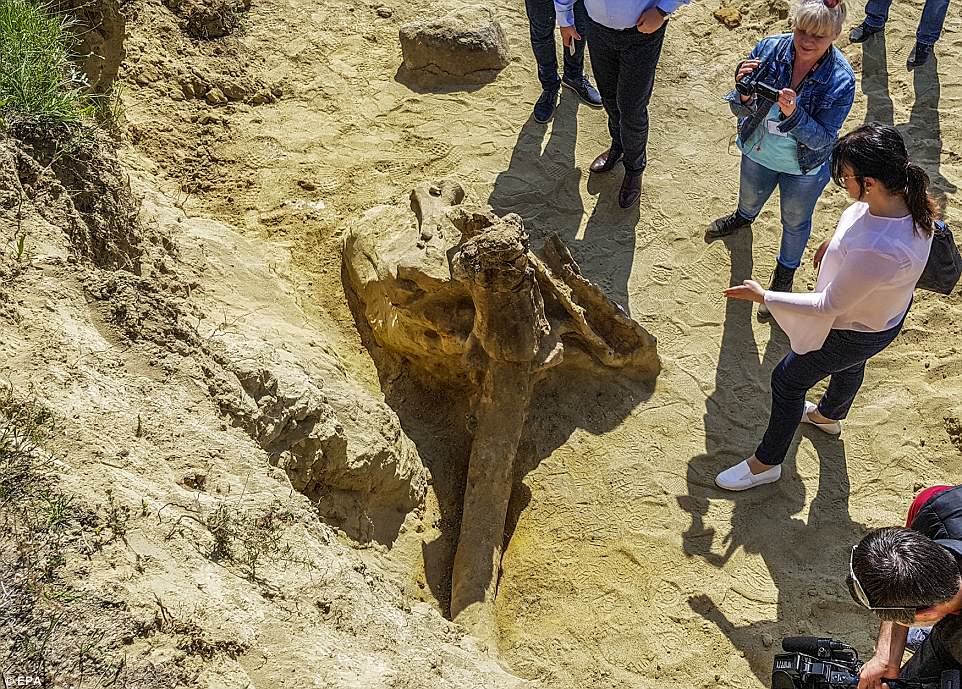
Journalists film the fossils of the mammal – scientists began excavating the skeleton in Dolni Disan in central Macedonia last month
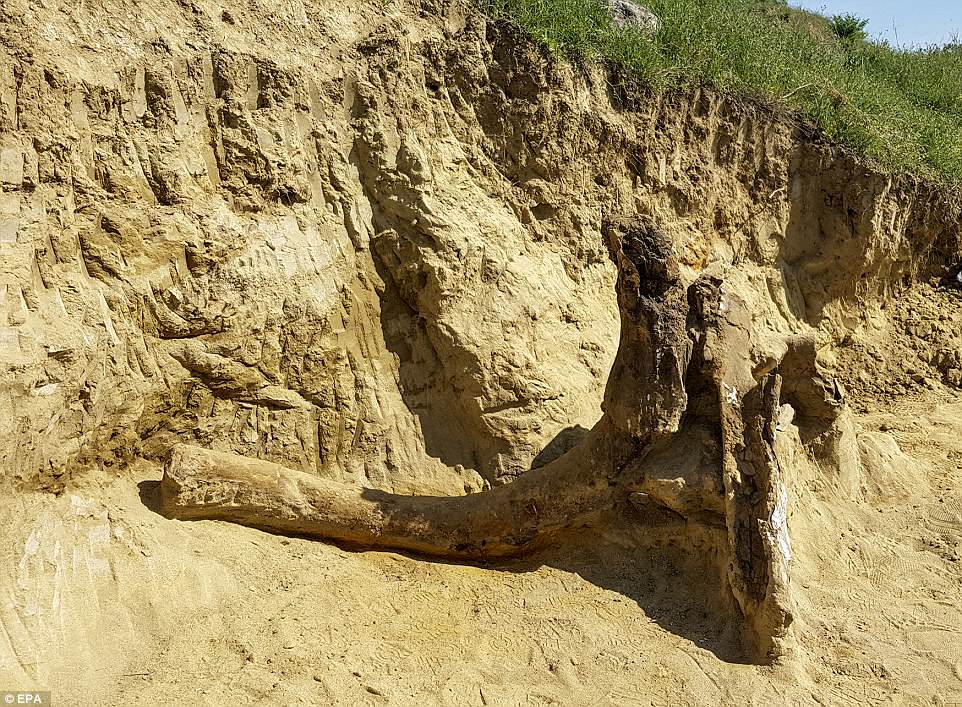
It is estimated the animal, known as a Mastodon, would have weighed about 10 tons and have been about 50 years old at the time of its death, roughly 8 million years ago during the Miocene epoch
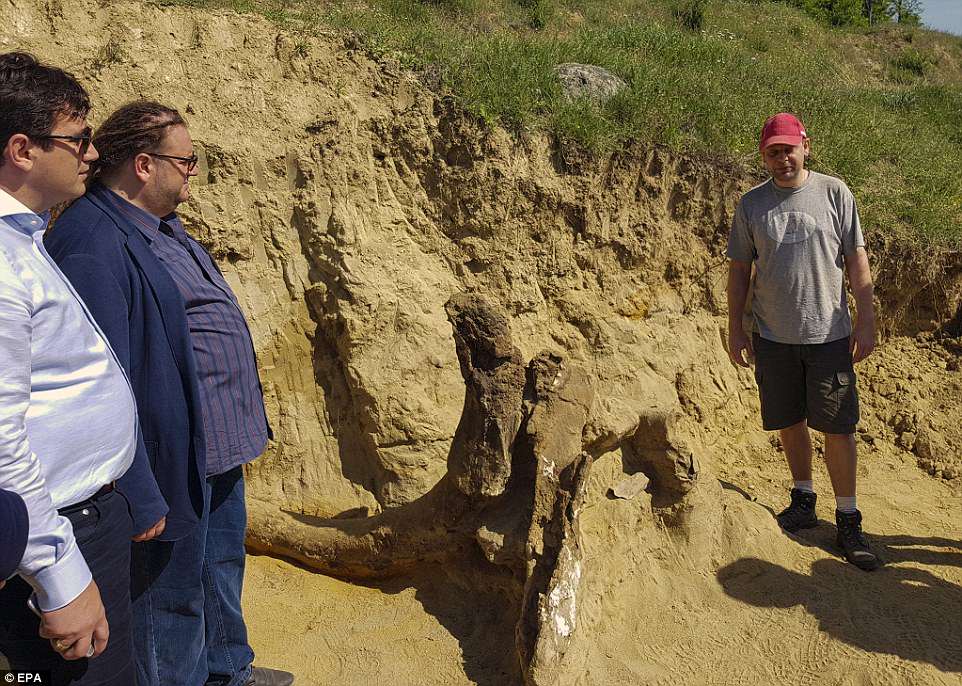
The fossils were discovered on April 24 but the Ministry of Culture of Macedonia released these new photos today
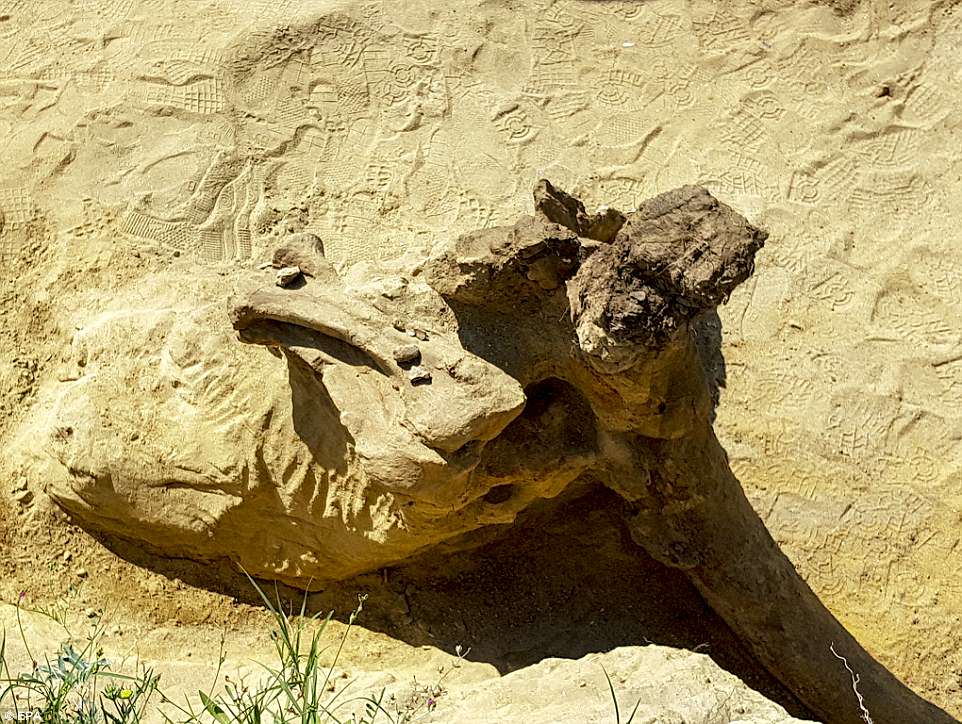
The Latin name is ‘Choerolophodon’ and it lived both in Europe and Asia during the Miocene epoch that lasted until around 5 million years ago
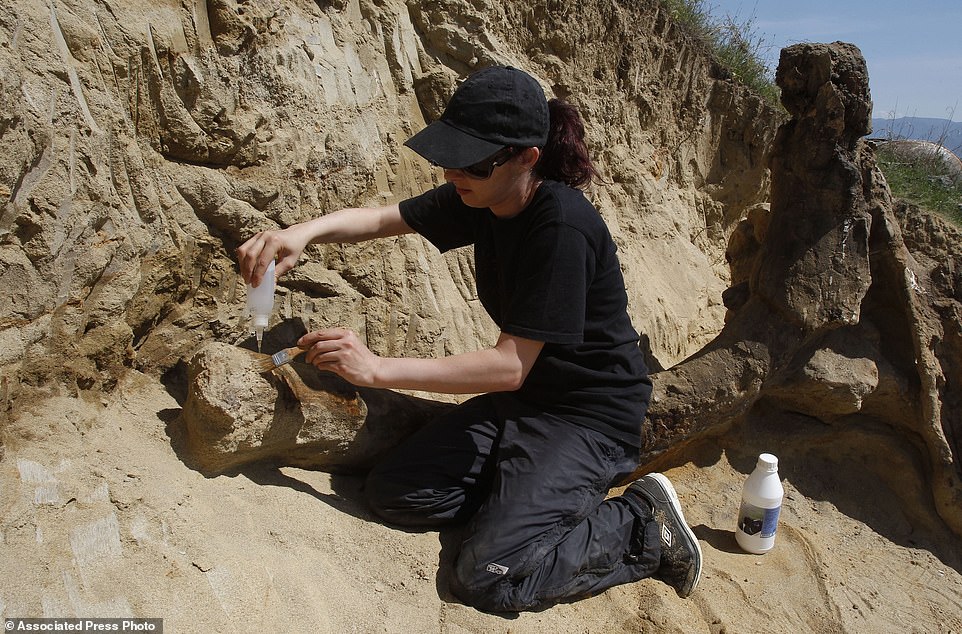
A member of a paleontologist team applies a liquid to protect a fossilised skeleton of extinct species of elephant, excavated at Dolni Disan, near Negotino, in central Macedonia
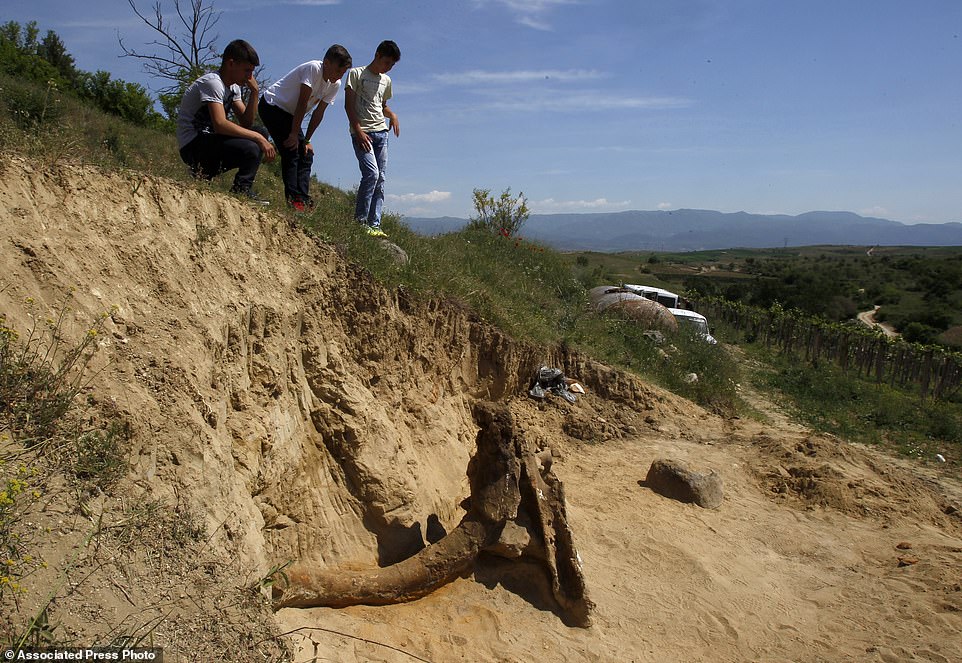
Paleontologists from Bulgaria and Macedonia are excavating the fossilised remains of a prehistoric elephant believed to pre-date the mammoth, after its bones were found accidentally by a man working in a field
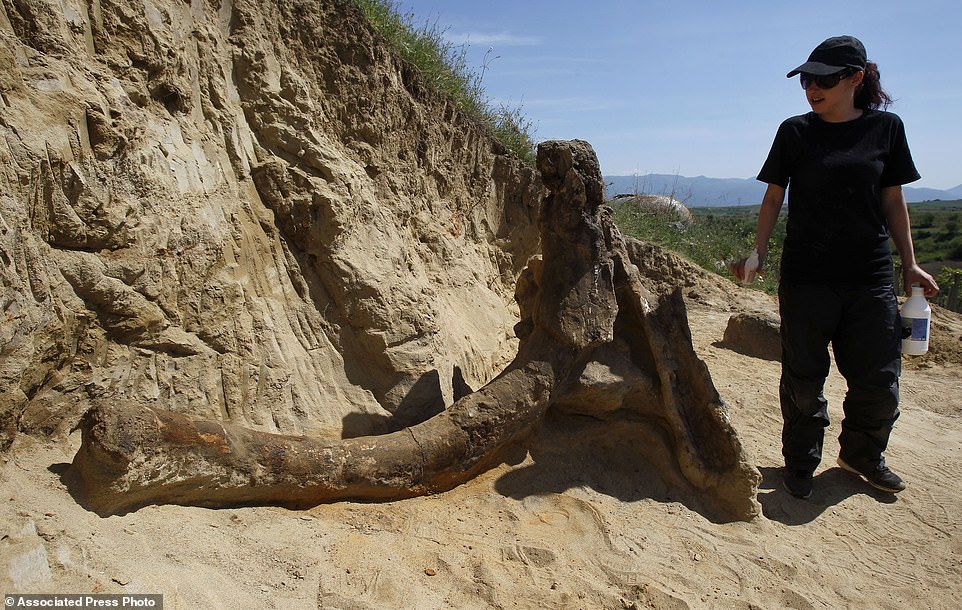
A member of a paleontologist team looks at a fossilized skeleton of an extinct species of elephant
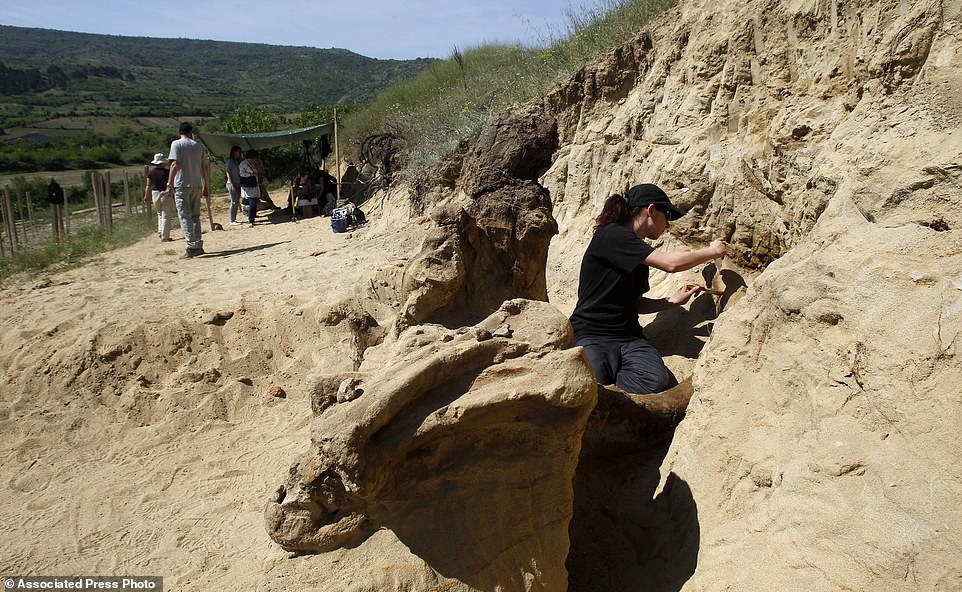
A member of a paleontologist team works on a fossilised skeleton of an extinct species of elephant
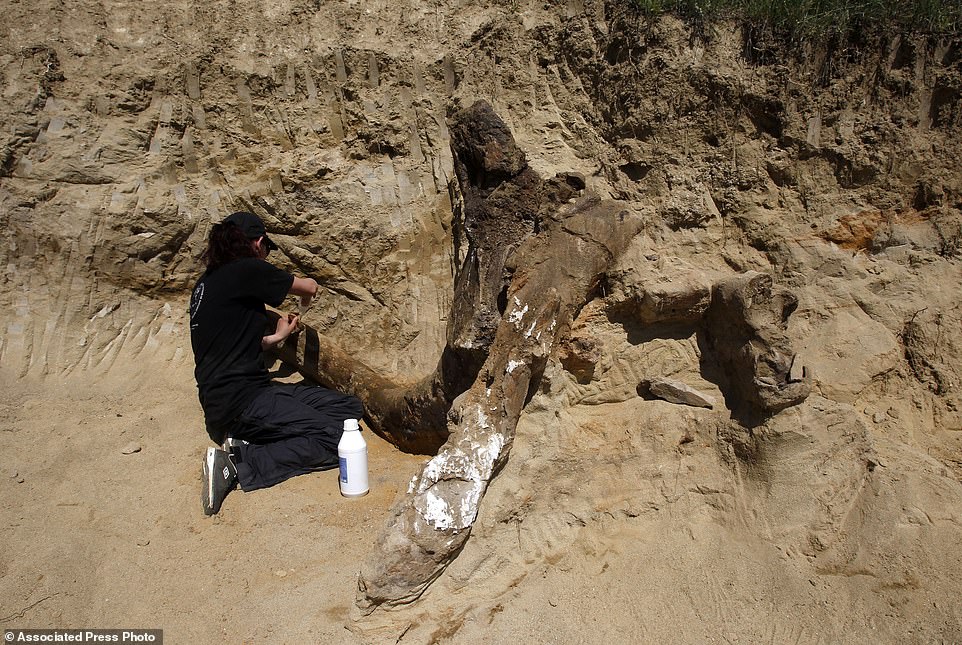
A joint Bulgarian and Macedonia expert team of palaeontologists managed to dig out the fossilised scull remains of this extinct species of elephant pre-dating the more familiar mammoth





